In two previous articles I had described my two main hobbies: on the one hand the philately and on the other hand the bonsai..
Of both he had made a more or less detailed description (never exhaustive because the topic to be developed is very vast) but at least to have some idea those who are alien to the topic and to share common concerns are those who are more related to the subject.
In the article entitled Bonsai an ancient art, from the great landscapes to the individual plants. I had promised to show you how it is the bonsai that I have been developing for quite some time, specifically almost 10 years ago (the bonsai is patience friends, a lot of patience!)
How To Create A Bonsai Step By Step.
And as promised is debt, here it is. I picked it up when it was just a broken branch fallen from a pine tree on an autumnal weekend in the central Apennines of Italy and transplanted it into a container to start taking root.
Then he made 12,000 km of plane travel to return to my native country (but that's another story). For now let's continue with the bonsai and its first steps.
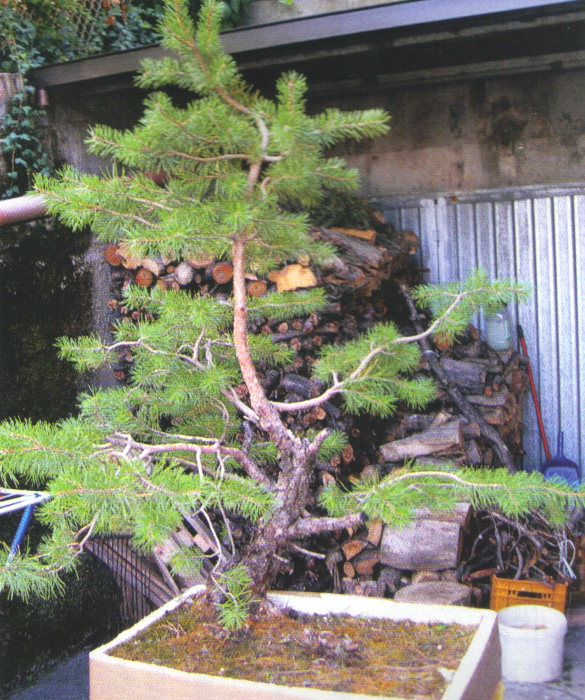
Gift future bonsai branch.
The first image of my future bonsai, a few hours after picking up the branch.
This is how the wild pine branch collected and barely transplanted was presented, before beginning to be worked as a future bonsai.
It is important to leave it transplanted for a year to allow time for root formation.
Shortening bonsai.
The height was approximately one meter, too high to start developing a bonsai, and especially to highlight its trunk, which is the most important.
Therefore the first step was to shorten it. As you can see the cut is at the height of the third branch after the second fork. This is important to give stability to the future bonsai. Its appearance must denote, even at the beginning, a balance in its structure.
On the other hand this form will contribute in the future to give it a nourished and harmonious cup.
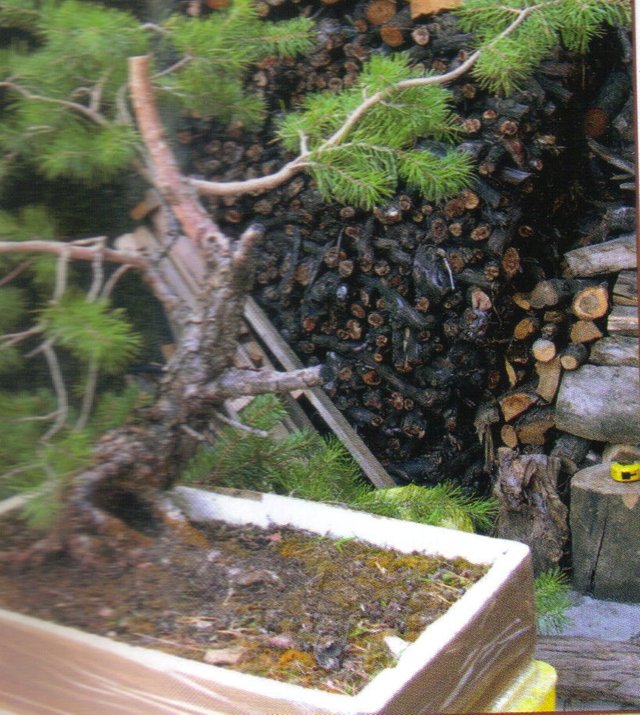
Bonsai shortened to a height of approximately 50 cm
The following photo presents a somewhat bleak look, and nevertheless necessary for the formation of bonsai.
Eliminate branches.
All the branches must be eliminated except one, in my case of the three I selected the middle one because the highest one was going to take the bonsai up too much, and the lowest one got too close to the ground.
The only one that could generate a nice cup was the middle one. To make it as natural as possible, I began to remove bark with a formon or gouge with great delicacy and patience.

The extreme parts of the cut branches have been carefully shortened to give it a more natural look.
As it is a variety of pine if we leave the trunk as well as it will surely begin to emanate resin distorting all the work done.
Log "burning".
Therefore the technique is used to "burn" the trunk to avoid it. That is, apply the fire to the entire "bare" part of the trunk. Previously we must apply Jin's liquid.
The main use of Jin's liquid is the bleaching and protection of dead wood both in junipers and pines and in all kinds of trees.
In this way that part of the trunk will assume a grayish color, very similar to that of dead trunks and branches in nature.
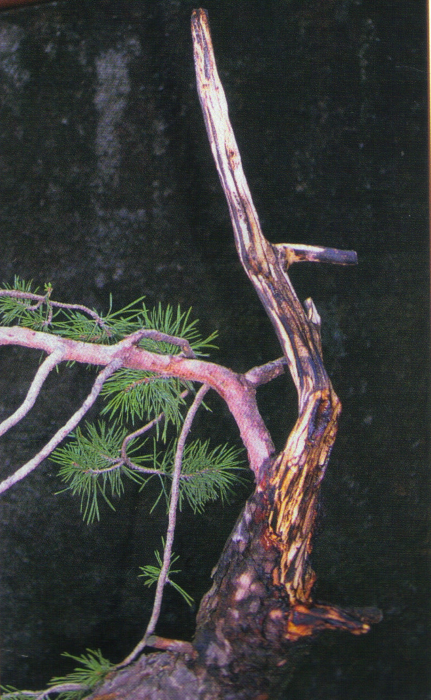
A special torch with low flame power is used to burn the trunk.
The technique of burning a bonsai with a blowtorch, basically consists in that, burning the wood to which we have removed the bark with a blowtorch.
This is done to age the wood more quickly, by burning the wood with the torch it dries more quickly, as is logical, but to do it well it must be done carefully and not burn the wood too much, if not you can only burn the wood, if not the whole tree.
Bend the branch to give it a shape.
The next step is to bend the branch to give it a predetermined shape. And for that, copper wire is generally used because of its extreme maneuverability. But the wire is not applied on the bare branch. Previously it should be covered so as not to hurt her.
To protect the bark, raffia is usually used (there are fans who use rubber tape or adhesive tape) to protect the tree's bark while it is wired and thus bend it more securely, in this way it is not damaged. The raffia must be natural flat fiber and not braided in rope.
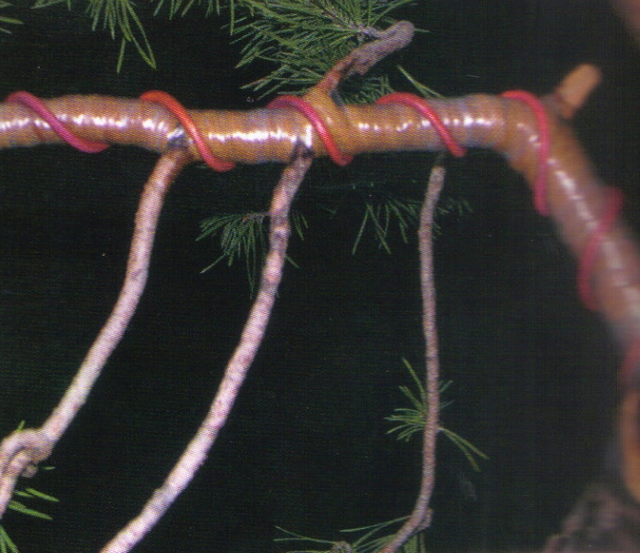
Fencing is a fundamental technique.
Wiring is a fundamental technique for modeling and styling Bonsai trees.
By properly winding a copper wire around the branches of the tree you will be able to bend and place the branches in the desired place.
Depending on the thickness of the branch it will be necessary to use a certain wire gauge so that the branch remains in place. In addition, it will take a few months before the branches maintain their new shape and remain in place after the copper wire has been removed.
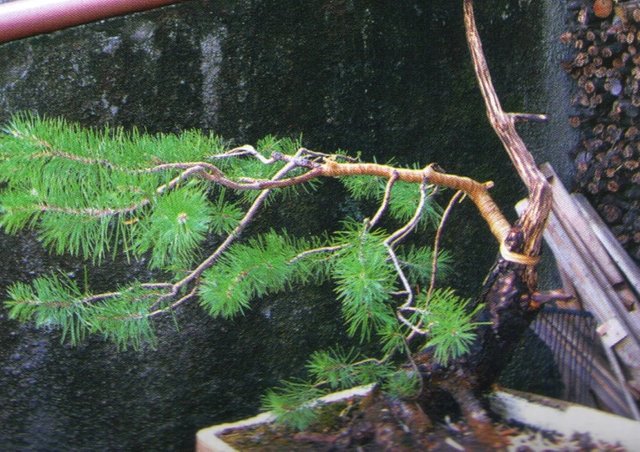
Shaping the bonsai.
And now the "artistic" part of the bonsai begins: that is, what form we want to give it. I have decided to start with some twists. I could have looked for the shape of circles, spirals, etc.
Compacting the cup in this bonsai will not be easy at all and I have tried to concentrate the future vegetation at the desired point.
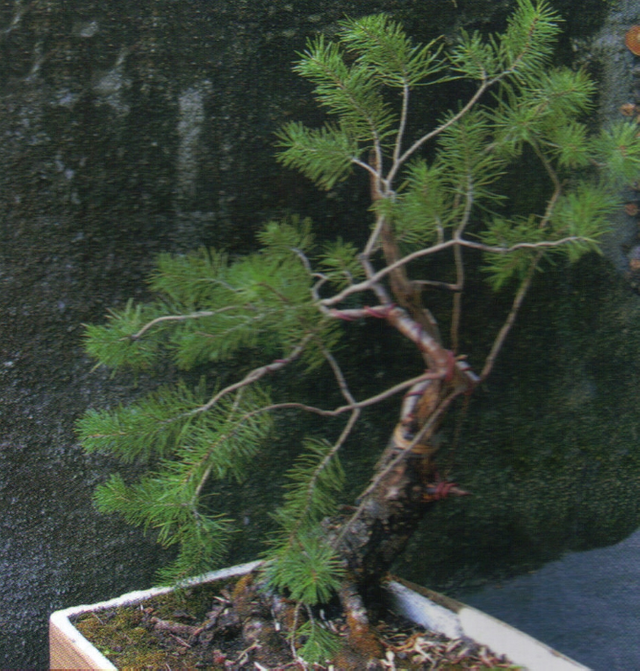
Two small braces have helped me keep the branch firm and stable in its new position
In this panorama we see that the branches are developing quite well but they are lengthening too much in a disorderly way making it difficult to create the cup.
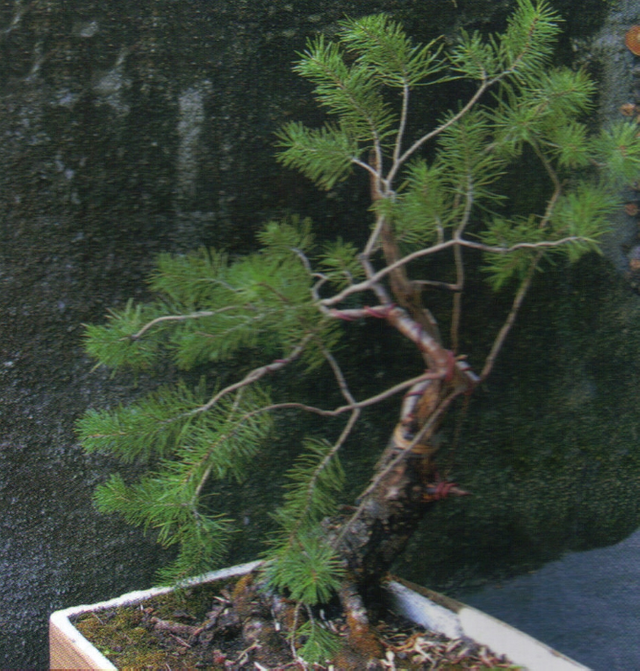
This is one of the most difficult parts because we must start with the definitive creation of the bonsai cup.
Each twig should be turned in the right direction to give the cup the right symmetry. Apply raffia and wire it.
The copper wire is removed only after being sure that the shape of the branch is stable. Normally between 6 months and one year. It depends on the size of the branch and the type of plant.
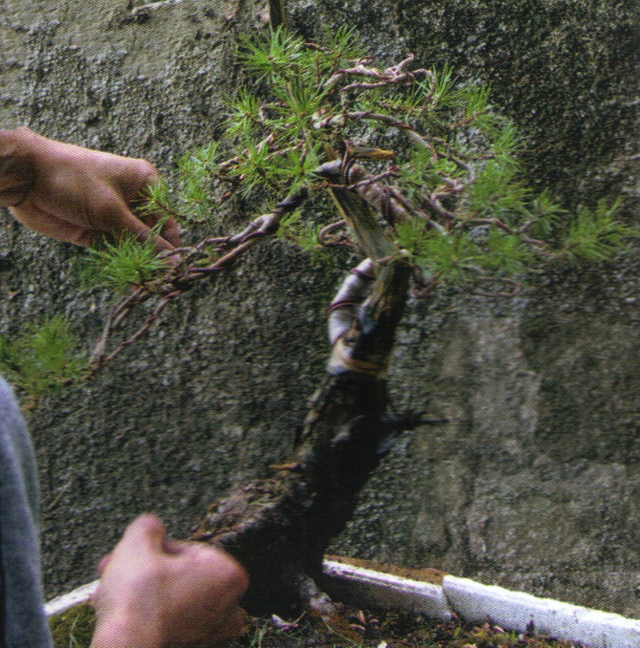
Giving the shape of each twig in a delicate way is essential so as not to subject the bonsai to excessive stress.
And this is the final result.
The cup must still form well. Keep in mind that pine is a plant of lentro growth.
In other varieties of plants (for example elm or fruit trees to name two examples) bonsai develops more rapidly.
The road is still long and arduous. But the hardest part is done.
Now it only remains to keep it and take care of it.
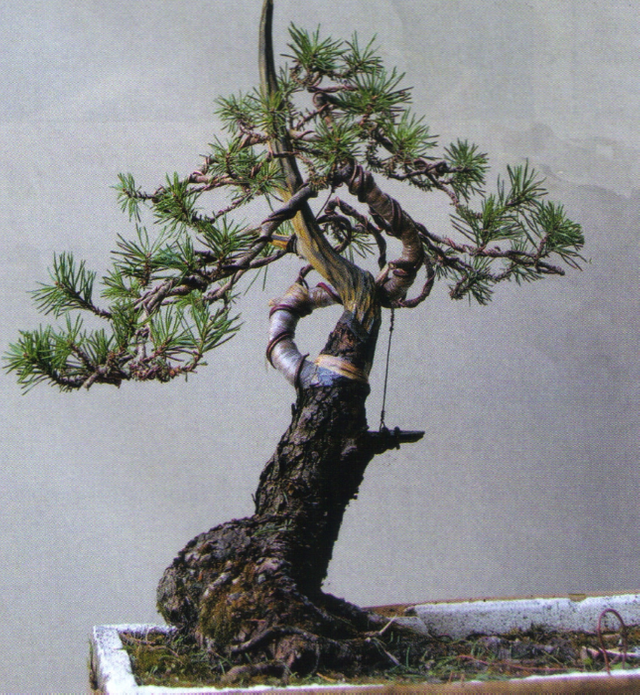
The final result is a bonsai 46 cm high and a diameter at the base of the trunk of 13 cm.
This style of bonsai that I am developing is called YAMADORI .
All photos are my property and have been taken with an Olympus Camedia C 220 Zoom digital camera. The resolution is not the best because it is a machine with only 2 megapixel, which I almost no longer use. 10 years ago it was a little jewel. Which gives us an idea of how technology is updated in this sector.
The procedures have been performed at intervals of time, which is why in the photos you can see how, little by little, the bonsai has begun to develop and expand with new branches.
Which is a good sign, as it demonstrates the vigor of the roots.

We can obtain a bonsai from a branch or cutting.
ReplyDeleteIn this case it could be a simple branch (which we should immediately transplant and make it rest for at least a year to generate roots) or collect a trunk usually on the slopes of mountains, hills or even rivers from which a branch derives but which has not been completely detached from the ground.
In this case we have the advantage that some roots have already been generated and therefore the development process is faster.
Maybe the only real big difference is that it will take many years of our time to fully develop it but it can be tried.
DeleteGreetings and thanks for participating by commenting.